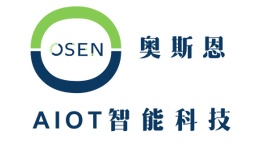方案详情文
智能文字提取功能测试中
微塑料成为痕量金属的特洛伊木马Microplastics as a Trojan horse for trace metals使用格哈特公司的振荡器Laboshake振荡微塑料悬浮液1小时,2小时,4小时,8小时,24小时,48小时,96小时和240 小时。Journal of Hazardous Materials Letters 2 (2021) 100035ELSEVIER Contents lists available at ScienceDirect Journal of Hazardous Materials Letters journal homepage: www.sciencedirect.com/journal/journal-of-hazardous-materials-letters 微塑料成为痕量金属的特洛伊木马 Microplastics as a Trojan horse for trace metals L. Hildebrandt a *, F.L. Nacka.D,1,, T. Zimmermann , D. Profrock a.* Department for Inorganic Environmental Chemistry, Helmholtz-Zentrum Hereon, Geesthacht, Germany赫姆霍兹中心无机环境化学系 Faculty of Biotechnology, Mannheim University of Applied Sciences, Mannheim, Germany曼海姆应用科学大学生物技术学院 ARTICLEINFO ABSTRACT Keywords: Metal sorption Trace metal vector Particulate plastics Sorption kinetics Metal release by plastics Due to an assumed lack of anionic binding sites (most plastics are non-polar), scientists long considered virginparticulate plastics inert towards metal ions. However, we proved significant metal sorption to microplastics atneutral pH and release in a solution mimicking gastrointestinal chemistry serving as a proof-of-principle forenvironmental and human bioavailability. Competitive ion-exchange incubation experiments comprised 55metals and metalloids. Fast kinetics were observed with 45 %-75 % of As, Be, Bi, Cr, Fe, In, Pb, Th, Sn and therare-earth element ions being sorbed after 1 h. The investigated metal and metalloid cations showed significantdifferences in the extent of sorption, based upon which a distinct categorization was possible. Microplastics arenot only a potential danger for aquatic and human life, but-as demonstrated in this paper-also serve as a TrojanHorse for dissolved metal cations. The corresponding effects on aquatic and human health will gain higherimportance in the near future due to the predicted increases of marine plastic litter and microplastic sorbents. Introduction While it has become evident that microplastics might even removepersistent organic pollutants from organisms due to the chemicalfugacity gradient between tissues and particles (Koelmans, 2015),inherent and sorbed metal species were shown to be bioaccessible(Turner et al., 2020) and -available (e.g. upregulation of detoxificationproteins such as metallothionein-2) (Boyle et al., 2020; Khan et al.,2015). Recently, laser ablation ICP-MS has enabled determination of metalconcentration profiles in marine microplastics and spatiotemporal cor-relations. The results indicate that both migration of additives with lowdiffusion coefficients and sorption of metals from the water phase canhave a significant impact on metal exposure mediated by microplastics(El Hadri et al., 2020). However, the sorption and desorption processesare still poorly understood (Hildebrandt et al., 2020a). They generallydepend on the plastic sorbent (age, biofilm, polymeric backbone, surfacearea and polarity, micro-, meso- and macropore structure, point of zerocharge, glass transition temperature, crystallinity, permeability), themetal sorptive (species, charge, diffusion coefficient, hydrodynamicdiameter) and the properties of the aqueous medium (pH, ionic strength,co-precipitation, organic matter, temperature) (Ahechti et al., 2020;Srivastava et al.,2008; Fred-Ahmadu et al., 2020). Our study is the first, in which the sorption and subsequent desorp-tion behavior of over 50 elements towards small microplastic particles[1C(63-250 um) was investigated. The work should be regarded as a proof-of-concept, as the applied experimental conditions were simplified. Materials and methods More detailed information on the applied methods and used mate-rials is contained in the SI chapter 1. Fig.1 represents the generalanalytical workflow. Reagents and standards All preparatory laboratory work was performed in a class 10 000/1000 clean room and in a class 100 clean bench. All reaction vesselswere cleaned and leached multiple times before usage (SI chapter 1.1).Nitric acid (HNO3) (69 % (w/w), Merck KGaA, Darmstadt, Germany)and hydrochloric acid (HCl) (35 % (w/w), Merck KGaA) (both P.A.grade) were double-subboiled before use (PFA stills, DST-4000 & DST-1000, Savillex, Minnesota, USA). Type I reagent grade (ultrapure)water (> 18.2 MQ cm) was produced with a Milli-Q Integral 3 ultrapurewater system equipped with a Q Pod Element (Merck KGaA). Buffersolutions were prepared using ultrapure ammonia solution (22%(w/w)) * Corresponding authors. E-mail addresses: lars.hildebrandt@hereon.de (L. Hildebrandt), daniel.proefrock@hereon.de (D. Profrock). Current affiliation: Faculty of Life Sciences, Hamburg University of Applied Sciences, Hamburg, Germany. https://doi.org/10.1016/j.hazl.2021.100035 Received 13 April 2021; Received in revised form 21 July 2021; Accepted 26 July 2021 and ultrapure concentrated acetic acid (> 95 % (w/w); both FisherScientific, Schwerte, Germany). Detailed information about the used model microplastics and its sizefractionation process can be found in SI chapter 1.2. The raw materialwas sieved using a sieve cascade made of nylon fabric (LAB-MarketGmbH, Ludwigshafen, Germany) and a vibrating sieve plate (AS 300control, Retsch GmbH, Haan, Germany) (SI chapter 1.2.1, SI Fig. S1).Size fractions 63-125 um and 125-250 um were used for the sorptionand desorption studies. The primary but irregularly shaped (SI Figs. S2and S3) microplastics comprised the polymer types polyethylene (PE)and polyethylene terephthalate (PET) (Goodfellow Cambridge Limited,UK). Important physical properties as well as further characterizationdetails of SEM (SI Figs. S4 and S5) and ATR-FTIR analyses (SI Fig. S6) ofthe two plastic particles are contained in SI chapter 1.2.2. Sorption experiments The entire sorption tests were carried out at a pH of 7.0±0.2.Microplastic samples (m= 250 ±10 mg) were weighed into 50±0.25mL DigiTUBEsQ (SCP Science, Baie D’Urfe, Canada) and submerged in25 mL multi-element-buffer-solution with target concentration of theindividual elements of 50 pg L- each (SI chapter 1.3). The microplastic suspensions were placed on a shaker (Laboshake,Gerhardt Analytical Systems, Koenigswinter, Germany). Triplicatesamples of each type of the different polymer suspensions were filteredafter defined time intervals: 1 h,2h,4h,8h, 24 h, 48 h, 96 h and 240 h.Hereby, a DigiFILTERQ Manifold (SCP Science) in conjunction with avacuum pump (20 LPM, KNF Laboport, Freiburg, Germany) was used (SIFig. S7). After filtration, the particles and DigiTUBEs@ were eachwashed with 20 mL of buffered ultrapure water. Method blank and puremulti-element solutions were also incubated and filtered to check forcontamination and element losses. The microplastics filtered off weredried for at least 24 h in a PMMA box in the clean room. Desorption experiments The physiologically-based extraction test (PBET) solution containedpepsin, lactic acid, acetic acid, monosodium citrate and HCl (SI chapter1.4). Triplicates of the metal-loaded microplastics (m=50 ±5 mg),thathad been subjected to an incubation period of 240 h, were mixed with 20mL of PBET solution (SI Table S2), which served as a greatly simplifiedmodel for gastrointestinal chemical conditions (suitable for a proof-of-concept). The solution was adapted from a protocol“designed aroundpediatric GI tract parameters for a child 2 - 3 years old"(Ruby et al.,1996). The desorption behavior was investigated at pH of 1.5 and 4.Suspensions were placed for 1.5 h at 37 °C on a shaking plate (GFL,Gesellschaft fiir Labortechnik mbH, Burgwedel, Germany). After incu-bation, the particles were separated from the solution by filtration asalready conducted after the sorption phase. Background levels ofdifferent trace metals in the components of the PBET solution were takeninto account by respective method blanks. A microwave system Mars 6 240/50 (CEM Corporation, Matthews,NC, USA) in conjunction with TFMTM digestion bombs with a volume of55 mL was used for this work (see SI chapter 1.5 and SI Table S3). Ali-quots each of the dried polymer particles (100 ± 10 mg per samplereplicate from the sorption phase and 50 ±5 mg (n =3) per replicatefrom the desorption phase) were digested. The applied microwave-assisted acid digestion procedure as well as the underlying methoddevelopment, which is based on investigation of five further plasticcertified reference materials (CRMs) in the microplastic size range, isdescribed in Hildebrandt et al. (2020) (Hildebrandt et al. (2020a)). Inthis study, method validation was conducted by means of CRM plasticpellets ERM-EC680 m (PE). Any relevant elemental contents of the rawmicroplastics but also chemicals used for the desorption study weremathematically considered. Elemental analysis External calibration standard solutions for quantification (all trace-able to NIST standards) were prepared from custom-made multi-elementstandards of different composition. The measurement of the filtrates andthe digests was carried by means of an ICP-MS/MS instrument (Agilent8800 Triple Quadrupole ICP-MS, Agilent Technologies, Tokyo, Japan).The ICP-MS/MS was coupled to an SC-4 DX autosampler equipped witha FAST discrete sampling valve (ESI Elemental Scientific, Omaha, USA). More detailed information on the performance optimization andcalibration procedures, instrument settings, measurement modes (nogas,He, H2 and O2) and measured isotopes can be found in the SI chapter1.6. Detailed instrument settings (lenses, voltages and gas flows) canalso be found in the SI of previous work (Hildebrandt et al., 2020a;Hildebrandt et al., 2020b). In total, 55 different metals and metalloidswere quantified in one run (see SI Fig. S8). LODs and LOQs for allmeasured elements in the selected modes for the sorption and desorptionstudies are shown in SI Table S4. Data processing and calculations Multi-element data were processed using MassHunter version 4.4(Agilent Technologies, Tokyo, Japan) and a custom written Excel@spreadsheet. A comprehensive section on the validation of the elementalanalysis (e.g. LODs and LOQs), further properties of the analytical resultssuch as uncertainties and the application of Dixon’s Q test is contained inthe SI chapter 1.8.1. Results and discussion We studied sorption kinetics (t=1,2,4,8,24, 96 and 240 h) of 55metal and metalloid ions (CM = 50 ug L-l) towards virgin PE and PETmicroplastics (CPE,PET=10 g L’l) in the size classes of 63-125 um and125-250 um. Microplastic and also elemental concentrations werechosen considerably higher than in a realistic environmental situation. Fig. 1. Flow chart of the analytical process applied for the sorption and desorption study. However, the setup was suitable for a proof-of-concept study to gaininsights into the extent of interactions between metals/metalloids andsmall particulate plastics. It facilitated the handling of microplasticparticles and enabled meeting LODs even in the case of low extents ofsorption. The sorbents were chosen conservatively, since weathering of plasticsurfaces, e.g. by photooxidation (Fotopoulou and Karapanagioti, 2012),reduces sorption of persistent organic pollutants but considerably in-creases sorption of metal ions (Bradney et al., 2019; Turner and Holmes,2015). In contrast to the few existing sorption kinetics studies, smallmicroplastics were used instead of pellets due to the highersurface-to-volume ratio and their high relevance for ingestion. Usingparticles with irregular shapes is preferable due to higher environmentalabundances compared to pellets and beads. A detailed characterizationof both used microplastics are shown on SI chapter 2.1. This includes thegravimetric proportion of the size classes of both raw materials aftersieving (SI Table S5), as well as the particle size distributions within theindividual fractions (on a volume basis assuming sphericity (SI Figs. S9and S10). Quantification by means of ICP-MS/MS in conjunction with arecently developed traceable microplastic-specific microwave-assistedacid digestion protocol (Hildebrandt et al., 2020a; Hildebrandt et al.,2020b) yielded elemental recoveries for ERM-EC680 m (PE) between101 % and 107 % (SI Table S6). Furthermore, SI Fig. S11 displays themass fractions of 23 elements above the LOQ in the PE and PET micro-plastics. To be able to carry out a valid examination of the metal sorptionto the surfaces of the polymer particles, the examination of the sorptionto the vessel wall is essential. Experiments proved that sorption tomicroplastics is strongly favored towards sorption to the vessel asdescribed in SI chapter 2.2 and SI Fig. S12. Fast kinetics were observedwith uptakes of 40 %-75 % of As, Be, Bi, Cr, Fe, In, Pb, Th, Sn and therare-earth element ions after 1 h (Fig. 2). However, similar to thebehavior of organic pollutants and heavy metals towards activatedcarbons (Mohan et al., 2008; Ponnusamy et al., 2010; Mohan andChander, 2000), sorption took place in two phases. The second phasewas characterized by a slow increase in the sorbed mass of trace metaland metalloids cations. Four different kinetics models enabled formulation of hypothesesabout mechanistic aspects of the sorption process (Fig. 3). The excellentfit of the second order model (R²= 1.0, Fig. 3B) suggests that chemisorption by ion exchange and not physisorption (R²<0.88 forpseudo-first order kinetics) governs the process (Abdel-Ghani et al.,2016; Ghasemi et al., 2014). Findings match well with studies on thesorption of metals and polar molecules to different organic sorbents suchas activated carbon (Mohan and Singh, 2002), synthetic polymers(Zhang et al., 2020) and plastic pellets (Ahechti et al., 2020; Godoyet al., 2019; Yu et al., 2020). The Elovich model (Fig. 3C) is useful toillustrate chemisorption on spatially and energetically heterogeneoussurfaces, in which sorption rates can strongly decrease with increasingsurface coverage. It also indicates that the rate-limiting step could likelybe the chemical interaction between metal ions and functional groupswith a negative charge or partial charge. The high initial sorption rates (Fig. 2) of Sc and As indicate “fast"nonactivated sorption (Low, 1960).“Slow” activated sorption to ener-getically unfavorable binding sites appears to follow the “fast”step. Thecurve of the intraparticle diffusion model (Fig. 3D) shows bilinearity anddoes not pass the origin (Abdel-Ghani et al., 2016; Yakout and Elsherif,2010) indicating that intraparticle diffusion is relevant but not the onlyrate-limiting step. Presumably, a first step obeying boundary layer orfilm diffusion control limits the investigated process (Abdel-Ghani et al.,2016). Remarkable differences in the extent of sorption appeared in theexperimental multi-element setup (competitive ion-exchange sorption).Fig. 4 displays a categorization of all 55 investigated elements accordingto the extent of sorption at equilibrium. While the rare-earth elements,Cr, Fe, In, Sn and Ti exhibited almost quantitative sorption to PE par-ticles, Ba, Cd, Co, Cu, Hg, Ni, Tl and Zn, among others, sorbed only to asmall extent (< 10 %) (SI Table S7 for more details). There is no cleardependence on ion radius and charge recognizable. The orange-coloredelements seem to migrate from the polymeric matrix into the solution.Interestingly, not all elements, of which the microplastics contain highermass fractions (e.g. Sb in PET), migrate out of the polymeric matricesindicating the importance of the additive species. As expected, the microplastic fractions of 63-125 um showed asignificantly higher sorption capacity with respect to both plastic types(Fig. 1). It also became evident, that the PE particles have a significantlyhigher sorption capacity than the PET particles. Regarding PET, noelement fell in the category of 80 %-100 % sorption and only the rare-earth elements showed sorption between 50 % and 80 %, whereas > 50 Fig. 2. PE 63 - 125 um: Examples of kineticprofiles for four representative elements (Sc, As,Mn and Hg) with different sorption behaviors.Solid lines represent the total element mass inthe acid digests anddashed lines thosemeasured in the filtrates. Filtrates and digestswereinvestigatedforall replicates.Forcomparability purposes, the metal contents areprovided as absolute masses (mmean = 1.3 ug).Regarding Sc, As and Mn, only the first 25 h arerepresented on the x-axis to better display thefirst phase of“immediate sorption” (Mohanet al., 2008) which is then followed by a longerperiod of slow sorption. Fig. 4 shows the cor-responding categorization of all 55 elements.Error bards represent one SD (n = 3). If notrecognizable, the error bars are smaller than thepoint. A) Pseudo-first order kinetics model B) Pseudo-second order kinetics model In(t) t^0.5 Fig.3. PE 63-125 um: Investigation of the sorption kinetics of Sc (blue square) and As (grey circle), which reached equilibrium approximately after 96 h, by pseudo-first order (Lagergren, 1898)(A), pseudo-second order (Ho and McKay, 1998) (B), Elovich (Zeldovic, 1946) (C) and intraparticle diffusion models (Weber and Morris,1963) (D). Parameters: qe and qu: Mass fractions sorbed at equilibrium and time (t); k1(4*10-4(Sc)and8*10(As) min) and k2 (1.278*10(Sc) and 1.282*106(As)g mg min): Rate constants for the pseudo-first and -second order kinetics models; h (31.9 (Sc) and 14.2 (As) mg g min): Initial absorption rate; α (3063 (Sc)and 741 (As) mg g min): Constant related to the initial sorption rate; β (2.0* 10 (Sc) and 3.2*10 (As) g mg): Constant related to the extent of surfacecoverage; k; (47.0.2 (Sc) and 26.8 (As) mg gmin5): Intraparticle rate constant; Ci (2765 (Sc) and 1477 (As) mg g): Constant related to the thickness of theboundary layer (For interpretation of the references to colour in this figure legend, the reader is referred to the web version of this article). Fig. 4. Periodic tables: Categorization of metals and metalloids according to the extent of sorption to PE and PET microplastic particles (63 - 125 um; SEM images:Surface structure of PE and PET microplastic particles). % of 28 elements were sorbed by the high-modulus PE.Rochman et al. (2014) reported that HDPE accumulated lower con-centrations of nine investigated metals than LDPE, PET, PP and PVC, that all sorbed similar metal mass fractions in a marine deploymentstudy (Rochman et al., 2014). In contrast, Godoy et al. determined theorder PE > PVC> PS> PP > PET in adsorption batch experiments (Godoy et al., 2019). Interestingly, neither the point of zero charge (PE>PS> PP > PET> PVC) nor the Brunauer-Emmett-Teller surface area (PS> PP > PE > PVC>PET) could sufficiently explain these findings. Fromour perspective, the current literature clearly shows that it is animpermissible generalization to assign differences in the sorption ca-pacity to distinct polymer types. Due to the variability of influencingfactors, any mechanistic study should only compare specific andwell-characterized plastic materials since these are already highlycomplex multi-component mixtures with unique physico-chemicalproperties by themselves. In our experiments, the glass transition tem-perature (Tg, PET≈70-80°℃;Tg,HDPE~-110°C), might be of relevanceto explain the differences between PE and PET, since sorption favorsamorphous rubbery regions compared to glassy ones. Muller et al.(2018) demonstrated, for instance, that Tg mainly influences the uptakeof fuel aromatics and ethers by microplastics (Miiller et al., 2018).However, in our study, variations in pore filling (Fig. 3, SEM images)could also explain the differences. To prove that microplastics can act as a vector for metals in vitro, weconducted desorption experiments after filtration and washing of stablymetal-loaded particles. Extensive desorption of metals from the micro-plastics occurred in a PBET solution mimicking gastrointestinal chem-istry, which served as a greatly simplified model for human exposure.Reciprocal to sorption, relative desorption from PET was stronger thanfrom PE (Fig. 4). Additionally, relative desorption from the fraction125-250 um was higher than from the fraction 63-125 um. The ele-ments differed significantly in the share of desorption (Fig. 5 and SITable S9). As, Be, Pb, the rare-earth elements, Sn, Te, U, Vand Zr showedstrong release at a pH of 4. Lowering pH to 1.5 considerably increased desorption of all elements. Finally, the quantity of environmental metal transfer mediated byparticulate plastics also depends on their abundances. The Ellen Mac-Arthur foundation estimated that, in a“business-as-usual-scenario”themass of plastic waste could exceed the mass of fish in the sea by 2050 (E.M.A. Foundation, 2016). Microplastic concentrations were projected toexceed 1000 mg min surface waters by 2066 at some locations (Isobeet al., 2019). Thus, microplastics’role as an important sorbent comparedto other natural sorbents such as particulate organic matter, whichmainly controls sorption and transport of metals in aquatic environ-ments (Miiller, 1989), should no longer be underestimated. For futurestudies on microplastics as a vector for metals, it is meaningful todiverge from the common praxis to investigate pellets in the millimeterrange, for which sorption is mostly low (Ahechti et al., 2020; Turner andHolmes,2015). Advanced techniques for efficient extraction of the smallingestible microplastic fraction (<100 um) without changing the orig-inal surface structure and metal content are required. In the second step,these particles can serve as a realistic vehicle for exposure and leachingstudies. Future studies should also consider different environmentalfactors, e.g. the presence of POM and different natural ligands, andconservatively choose microplastic and elemental concentrations. This paper's results show the following trend: the smaller the parti-cles, the higher their “Trojan horse”effect. Therefore, small particulateplastics are of higher relevance for human and aquatic life, due thepotentially significant introduction of metals and metalloids into thefood chain. Many of these metals have been considered highly toxic fordecades (e.g. by the WHO). PE 63-125 pm 100 80一coo 60 40 20 0 100 80coao 60 40 20 0 As Be Bi In Pb Sc REE Sn Te Th Ti U V Y Zr PBET (pH=4) PBET (pH=1.5) HCI (pH=1.5) Fig. 5. Desorption share for selected elements using a PBET solution (with preceding sorption shares > 40 %). Cr, Fe and Rb were excluded due to elevatedbackground concentrations in the PBET solution. Declaration of Competing Interest The authors report no declarations of interest. Funding This research did not receive any specific grant from fundingagencies in the public, commercial, or not-for-profit sectors. Associated content All validation data, the materials and methods, and further resultsare available in the supplementary materials. Acknowledgments Clarissa Abetz (Institute of Polymer Research, Helmholtz-ZentrumHereon) has recorded the SEM images. Nils Gravenhorst has kindlycontributed to this publication by thorough proof-reading. Appendix A. Supplementary data Supplementary material related to this article can be found, in theonline version, at doi:https://doi.org/10.1016/j.hazl.2021.100035. References Abdel-Ghani, N., Rawash, E.S.A.,El-Chaghaby, G., 2016. Equilibrium and kinetic studyfor the adsorption of p-nitrophenol from wastewater using olive cake based activatedcarbon. Global J. Environ. Sci. Manage. 2 https://doi.org/10.7508/ gjesm.2016.01.002. Ahechti, M., Benomar, M., El Alami, M., Mendiguchia, C., 2020. Metal adsorption bymicroplastics in aquatic environments under controlled conditions: exposure time,pH and salinity. Int. J. Environ. Anal. Chem. 1-8. https://doi.org/10.1080/03067319.2020.1733546. Boyle, D., Catarino, A.I., Clark, N., Henry, T., 2020. Polyvinyl chloride (PVC) plasticfragments release Pb additives that are bioavailable in zebrafish. Environ. Pollut.263,114422. https://doi.org/10.1016/j.envpol.2020.114422. Bradney, L., Wijesekara, H., Palansooriya, K.N., Obadamudalige, N., Bolan, N.S., Ok, Y.S., Rinklebe, J., Kim, K.-H., Kirkham, M.B., 2019. Particulate plastics as a vector fortoxic trace-element uptake by aquatic and terrestrial organisms and human healthrisk. Environ. Int. 131, 104937. https://doi.org/10.1016/j.envint.2019.104937. E.M.A. Foundation, 2016. The New Plastics Economy: Rethinking the Future of Plastics &Catalysing Action. El Hadri, H., Gigault, J., Mounicou, S., Grassl, B., Reynaud, S.,2020. Trace ElementDistribution in Marine Microplastics Using Laser ablation-ICP-MS. Fotopoulou, K.N., Karapanagioti, H.K., 2012. Surface properties of beached plasticpellets. Mar. Environ. Res. 81, 70-77. https://doi.org/10.1016/j.marenvres.2012.08.010. Fred-Ahmadu, O.H., Bhagwat, G., Oluyoye, I., Benson, N.U., Ayejuyo, O.O., Palanisami, T., 2020. Interaction of chemical contaminants with microplastics:principles and perspectives. Sci. Total Environ. 706, 135978. https://doi.org/10.1016/j.scitotenv.2019.135978. Ghasemi, M., Ghasemi, N., Zahedi, G., Alwi, S.R.W., Goodarzi, M., Javadian, H., 2014.Kinetic and equilibrium study of Ni(II) sorption from aqueous solutions ontoPeganum harmala-L. Int. J. Environ. Sci. Technol. 11, 1835-1844. https://doi.org/10.1007/s13762-014-0617-9. Godoy, V., Blazquez, G., Calero, M., Quesada, L., Martin-Lara, M.A., 2019. The potentialof microplastics as carriers of metals. Environ. Pollut. 255, 113363. https://doi.org/10.1016/j.envpol.2019.113363. Hildebrandt, L., von der Au, M., Zimmermann, T., Reese, A., Ludwig, J., Profrock, D.,2020a. A metrologically traceable protocol for the quantification of trace metals in different types of microplastic. PLoS One 15. https://doi.org/10.1371/journal.pone.0236120 e0236120. Hildebrandt, L., Mitrano, D.M., Zimmermann, T., Profrock, D., 2020b. A nanoplasticsampling and enrichment approach by continuous flow centrifugation. Front.Environ. Sci. 8 https://doi.org/10.3389/fenvs.2020.00089. Ho, Y.S., McKay, G., 1998. A comparison of chemisorption kinetic models applied topollutant removal on various sorbents. Process. Saf. Environ. Prot. 76,332-340.https://doi.org/10.1205/095758298529696. Isobe, A., Iwasaki, S., Uchida, K., Tokai, T., 2019. Abundance of non-conservativemicroplastics in the upper ocean from 1957 to 2066. Nat. Commun. 10, 417.https://doi.org/10.1038/s41467-019-08316-9. Khan, F., Syberg, K., Shashoua, Y., Bury, N., 2015. Influence of polyethylene microplasticbeads on the uptake and localization of silver in zebrafish (Danio rerio). Environ.Pollut. 206 https://doi.org/10.1016/j.envpol.2015.06.009. Koelmans, A.A., 2015. Modeling the role of microplastics in bioaccumulation of organicchemicals to marine aquatic organisms. A critical review. In: Bergmann, M.,Gutow, L., Klages, M. (Eds.), Marine Anthropogenic Litter. Springer International一Publishing, Cham, pp. 309-324. https://doi.org/10.1007/978-3-319-16510-3_11. Lagergren, S., 1898. Zur theorie der sogenannten adsorption geloster stoffe, SvenskaVetenskapsakademiens. Handlingar 24 (4), 1-39. Low,M.J.D.,1960. Kinetics of chemisorption of gases on solids. Chem. Rev. 60,267-312.https://doi.org/10.1021/cr60205a003. Mohan, D., Chander, S., 2000. Single component and multi-component adsorption ofmetal ions by activated carbons. Colloids Surf. A Physicochem. Eng. Asp. 177,183-196. https://doi.org/10.1016/S0927-7757(00)00670-1. Mohan, D., Singh, K.P., 2002. Single- and multi-component adsorption of cadmium andzinc using activated carbon derived from bagasse-an agricultural waste. Water Res.36,2304-2318. https://doi.org/10.1016/s0043-1354(01)00447-X. Mohan, D., Singh, K., Singh, V., 2008. Wastewater treatment using low cost activatedcarbons derived from agricultural byproducts - a case study. J. Hazard. Mater. 152,1045-1053. https://doi.org/10.1016/j.jhazmat.2007.07.079. Muller, B., 1989. Ueber Die Adsorption Von Metallionen an Oberflachen AquatischerPartikel. https://doi.org/10.3929/ethz-a-000541284. Miiller, A., Becker, R., Dorgerloh, U., Simon, F.-G., Braun, U., 2018. The effect of polymeraging on the uptake of fuel aromatics and ethers by microplastics. Environ. Pollut.240, 639-646. https://doi.org/10.1016/j.envpol.2018.04.127. Ponnusamy, S.K., Ramakrishnan, K., Kirupha, S., Sivanesan, S., 2010. Thermodynamicand kinetic studies of cadmium adsorption from aqueous solution onto rice husk.Braz. J. Chem. Eng. 27 https://doi.org/10.1590/S0104-66322010000200013. Rochman, C.M., Hentschel, B.T., Teh, S.J., 2014. Long-term sorption of metals is similaramong plastic types: implications for plastic debris in aquatic environments. PLoSOne 9. https://doi.org/10.1371/journal.pone.0085433 e85433. Ruby, M.V., Davis, A., Schoof, R., Eberle, S., Sellstone, C.M., 1996. Estimation of lead andarsenic bioavailability using a physiologically based extraction test. Environ. Sci.Technol. 30, 422-430. https://doi.org/10.1021/es950057z. Srivastava, V.C., Mall, I.D., Mishra, I.M., 2008. Adsorption of toxic metal ions ontoactivated carbon: Study of sorption behaviour through characterization and kinetics.Chem. Eng. Process. Process. Intensif. 47, 1269-1280. https://doi.org/10.1016/j.cep.2007.04.006. Turner, A., Holmes, L., 2015. Adsorption of trace metals by microplastic pellets in freshwater. Environ. Chem. 12 https://doi.org/10.1071/EN14143. Turner, A., Holmes, L., Thompson, R.C., Fisher, A.S., 2020. Metals and marine microplastics: adsorption from the environment versus addition during manufacture,exemplified with lead. Water Res. 173, 115577. https://doi.org/10.1016/j.watres.2020.115577. Weber, W.J., Morris, J.C., 1963.Kinetics of adsorption on carbon from solutions. J. Sanit.Eng. Div. Am. Soc. Civil Eng. 89,31-60. Yakout, S.M., Elsherif, E., 2010. Batch kinetics, isotherm and thermodynamic studies ofadsorption of strontium from aqueous solutions onto low cost rice-straw basedcarbons. Carbon - Sci. Technol. 3, 144-153. Yu, F., Li, Y., Huang, G., Yang, C., Chen, C., Zhou, T., Zhao, Y., Ma, J., 2020. Adsorptionbehavior of the antibiotic levofloxacin on microplastics in the presence of differentheavy metals in an aqueous solution. Chemosphere 260, 127650. https://doi.org10.1016/j.chemosphere.2020.127650. Zeldovic, Y.B., 1946. The oxidation of nitrogen in combustion and explosions. ActaPhysicochim. URSS 21, 577-628. Zhang, M., Yin, Q., Ji, X., Wang, F., Gao, X., Zhao, M., 2020. High and fast adsorption ofCd(II) and Pb(II) ions from aqueous solutions by a waste biomass based hydrogel.Sci. Rep. 10, 3285. https://doi.org/10.1038/s41598-020-60160-w.
关闭-
1/6
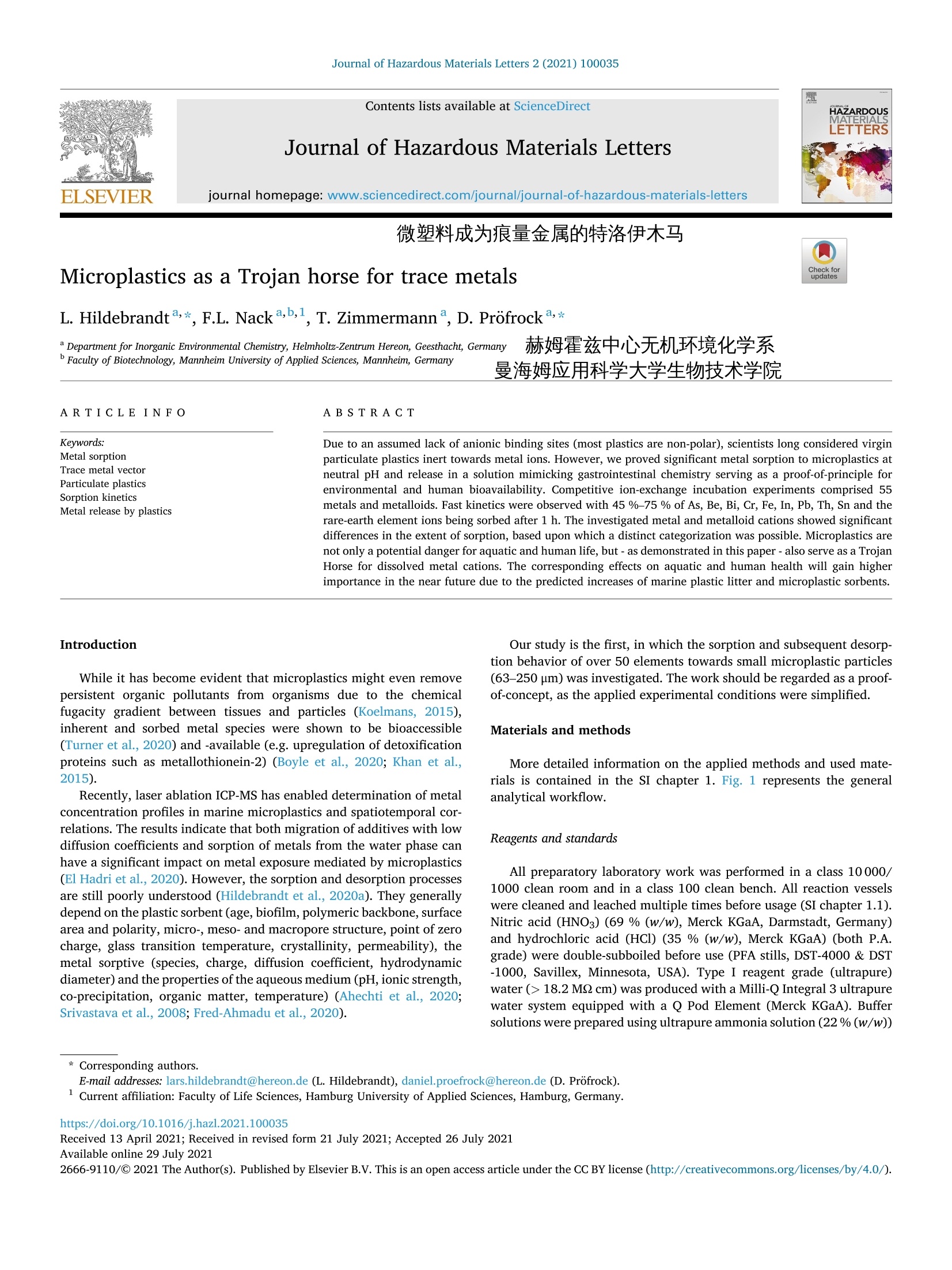
-
2/6
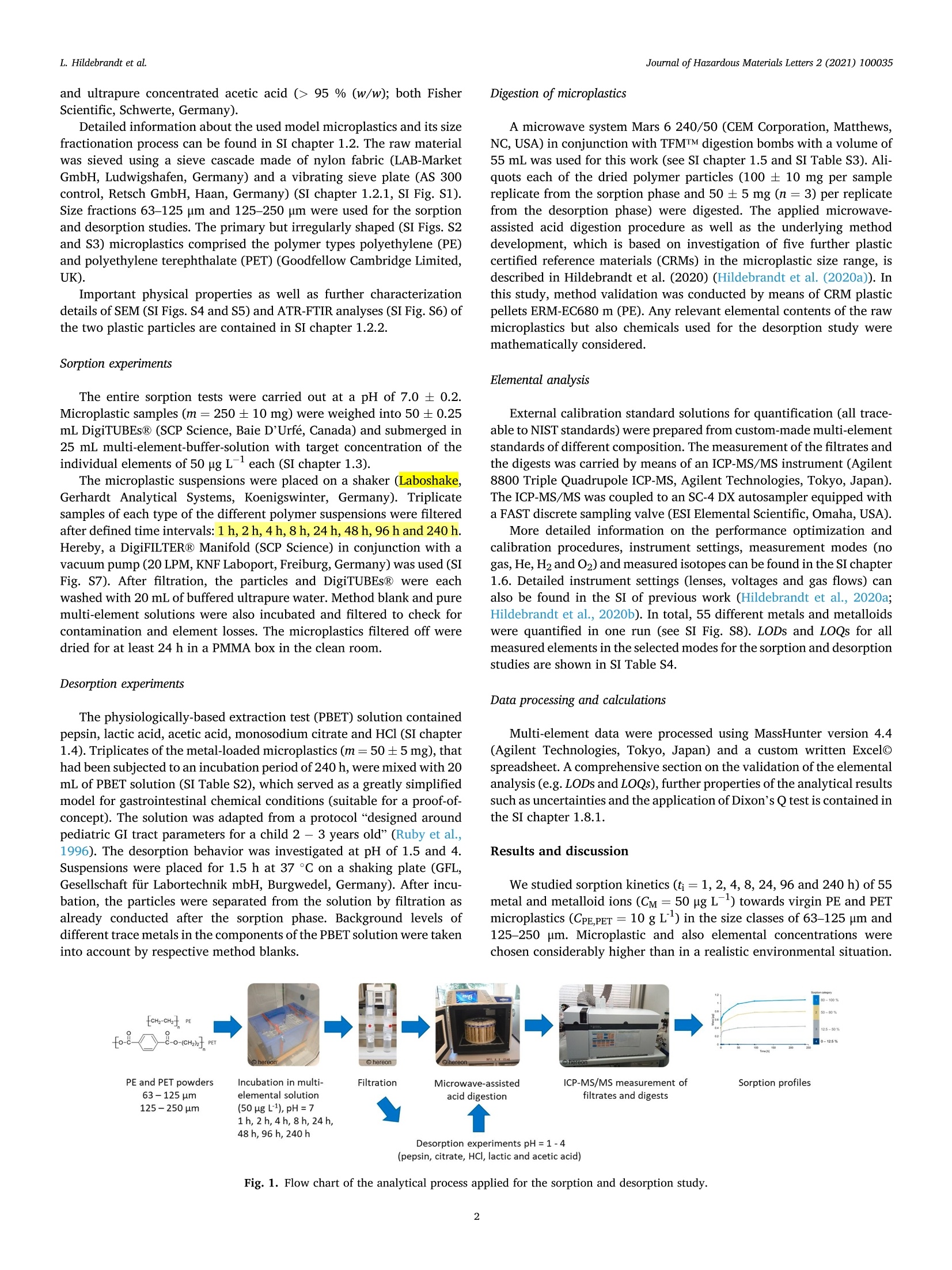
还剩4页未读,是否继续阅读?
继续免费阅读全文产品配置单
中国格哈特为您提供《微塑料悬浮液的振荡》,该方案主要用于海水中其他检测,参考标准《暂无》,《微塑料悬浮液的振荡》用到的仪器有格哈特强力高重现振荡器LS500/RO500、德国加液器MM。
我要纠错
推荐专场
相关方案


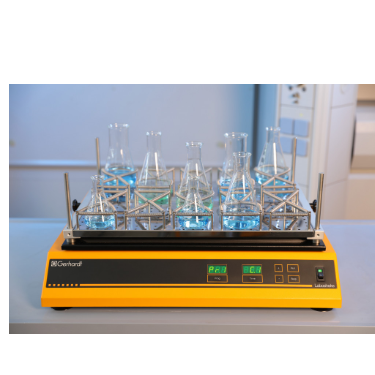
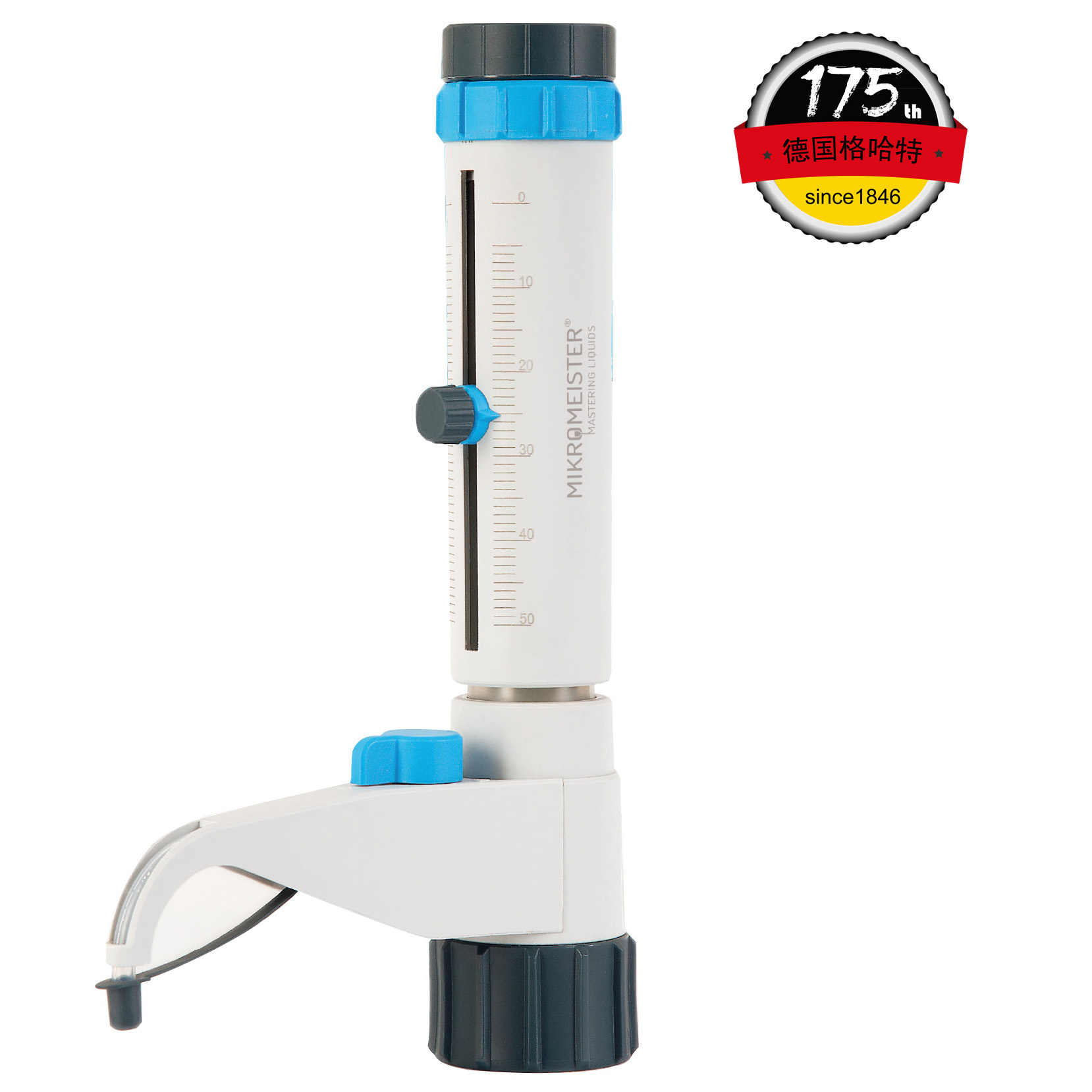
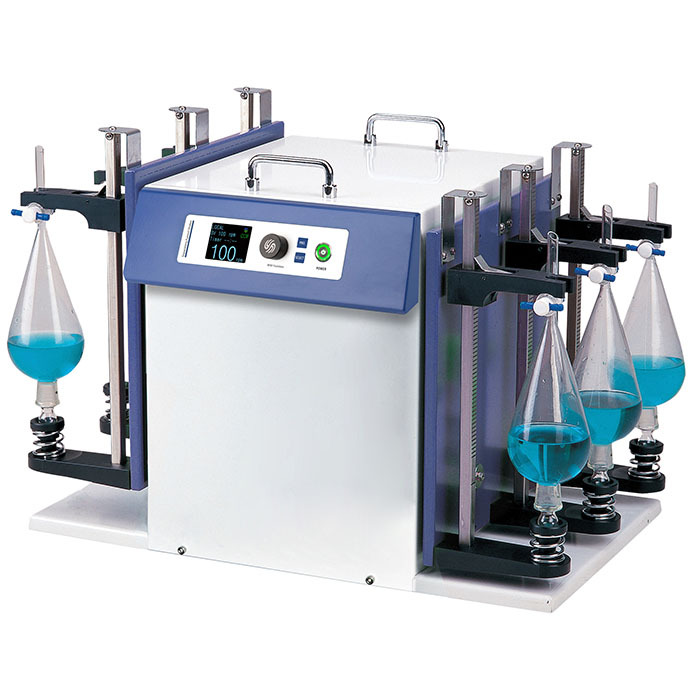
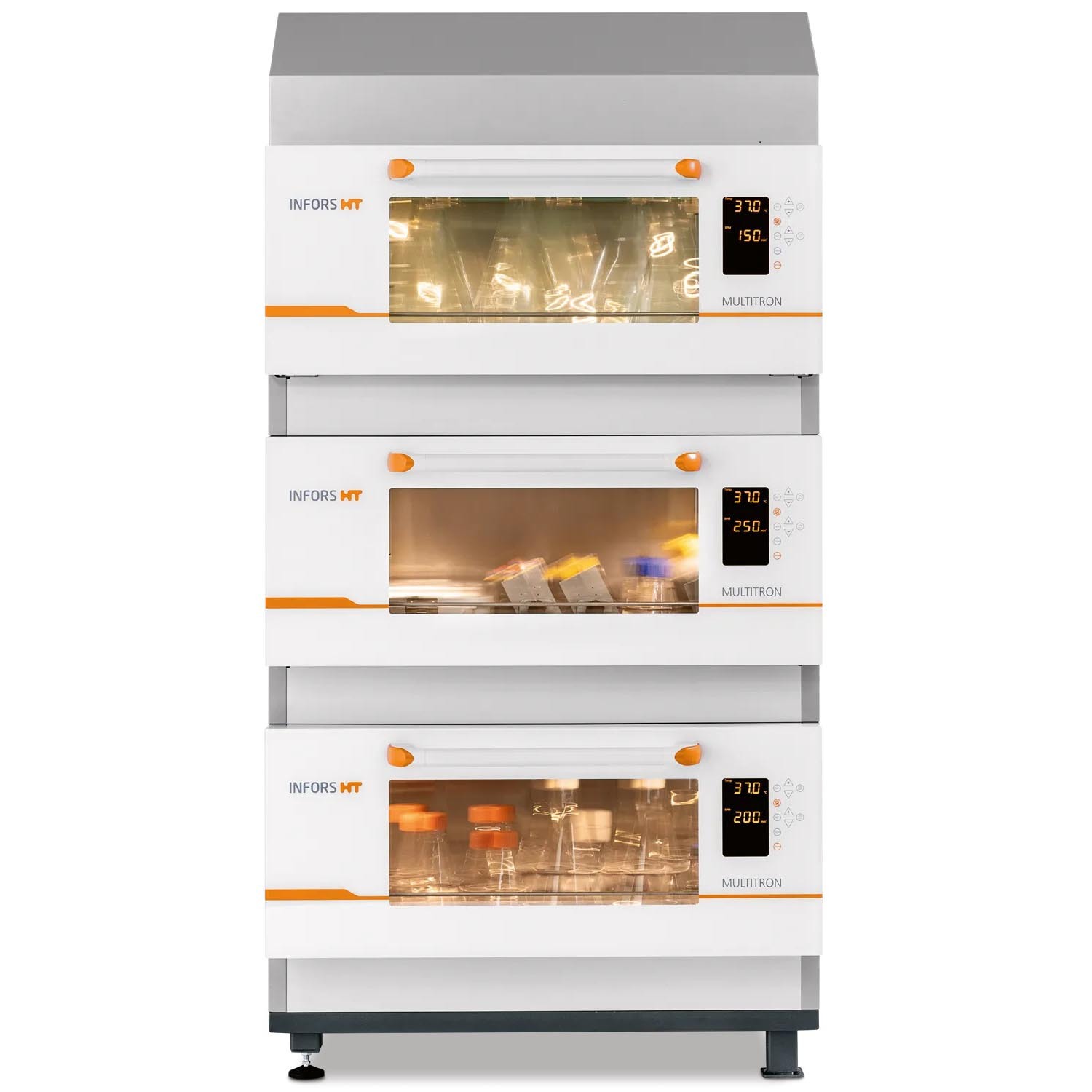
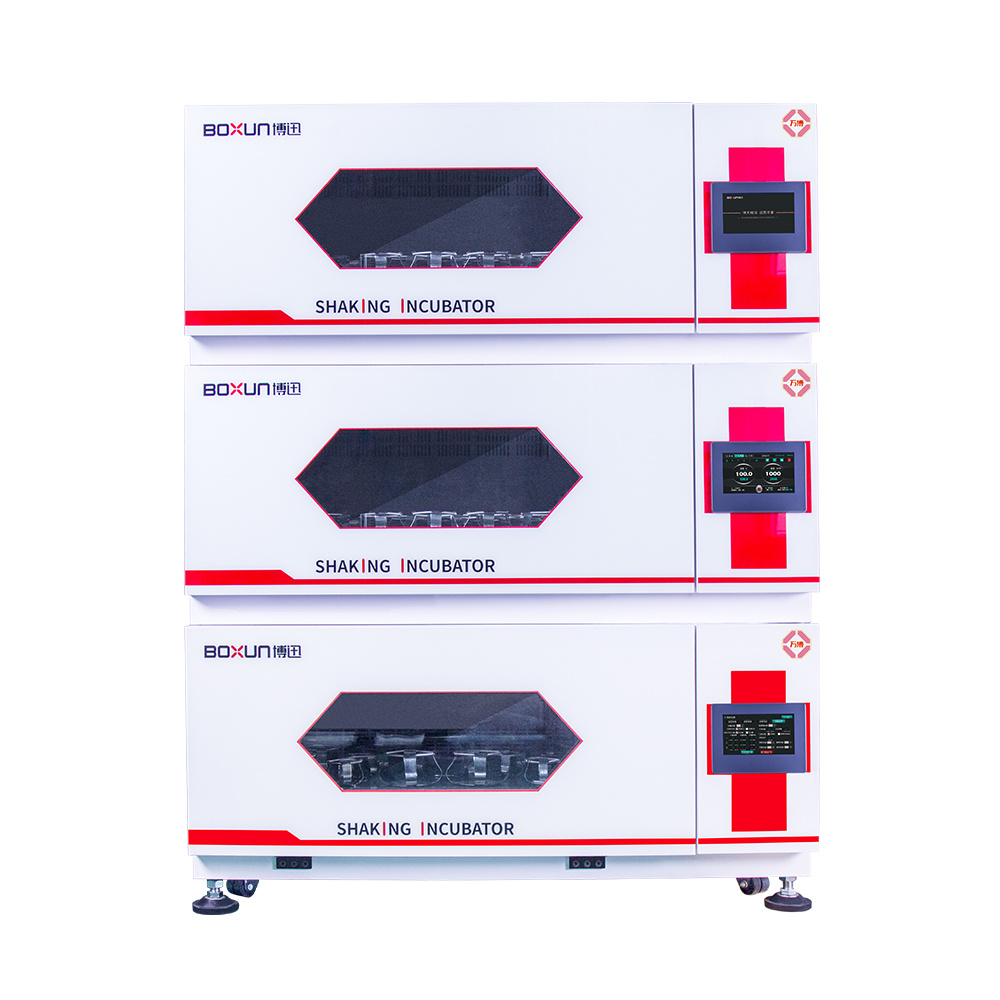



 咨询
咨询
